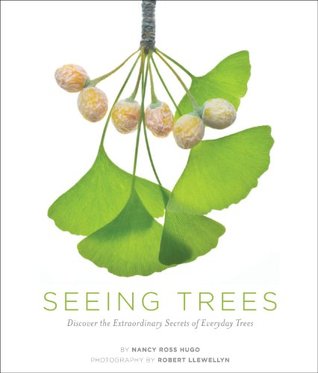Kindle Notes & Highlights
Read between
July 1 - July 7, 2019
I cringe when I see someone plant a small, short-lived tree in a space that could have accommodated a white oak.
They alternate along the stem, are usually 4 to 10 inches long, and have five to nine rounded, finger-like lobes and wedge-shaped bases.
caterpillars must time their hatching to the emergence of oak leaves because if they hatch too early, they will starve. If they hatch too late, they may also starve, since the leaves will be too tough and full of tannin to eat.
male flowers, which are clustered along tassel-like catkins, are easiest to see and they appear first.
Female white oak flowers are much harder to spot, at least until after they’ve been pollinated and have begun to resemble acorns.
The range of blooming times usually listed for white oaks growing in the eastern United States is late March to mid-May.
Galls are abnormal growths that oaks (and other plants) develop in reaction to the presence of certain insects.
I also find twigs with strangely broadened areas where they have detached from the tree. The twigs, usually about 6 to 18 inches long, come down in spring and summer bearing green leaves and later in the season bearing brown leaves or no leaves.
phrase from Thoreau, the female coneflowers of the white pine are “well-nigh inaccessible to man.”
V. M. Spalding (1899) described the “purplish rosy lips of the erect pistillate cone [of the white pine].”
the time to look for male and female “flowers” (or flowery, developing cones) is late April or early May (later than the same structures appear on other pines),
Unlike the female cones, these male cones don’t persist on the tree; they elongate, spill their pollen, turn brown, and fall off, littering the ground with what look like brown grubs or worms that soon disintegrate.
Yard and park trees, grown in the open, typically have a symmetrical, pyramidal shape (their crowns getting more horizontal as they age), and their whorls of branches clothe the tree all the way, or about two-thirds of the way, to the ground.
competition for New England’s white pines (the British crown wanting to reserve the best ones for the Royal Navy’s ships) helped precipitate the Revolutionary War.
for the most rewarding white pine viewing, I’d recommend a tree that is, as Horace Walpole once put it, “feathered quite to the ground.”
distinctive are white pine’s soft, blue-green needles in bundles of five. Each species of pine has its characteristic number of needles per bundle
White pine needles are also somewhat unusual in that they are shed after their second growing season, unlike the needles of most other pines that persist on the tree longer, and they are more flexible than most other pine needles.
like the needles of all conifers, white pine needles help “sift” snow.
stiff spruce needles are round in cross section (you can roll a spruce needle between your thumb and forefinger); softer fir needles are flat (they won’t roll).
A candle is the combination of new shoot and needle growth that characterizes pines in the spring.
there are five—count them, five—tiny needles in every quiver.
When conditions are right for seed release, the cone’s scales dry and curl back, creating spaces that allow the wind to grab and disperse the winged seeds previously wedged between them.
there can be significant variation between the cones of individual trees of the same species.
it proves how much we could see that is usually outside our awareness.
white pine’s oval seeds are tiny, about ¼ inch long with wings about ¾ inch long. They, too, are edible (sweet and nutritious) but too much work for all but the most dedicated wild food foragers to harvest.
you don’t need a wilderness or a botanical garden to make meaningful tree observations.
biggest obstacle to tree viewing is in thinking there’s nothing worth viewing in the locales we frequent.
It’s sometimes harder to see the familiar than the unusual, because in order to really see the familiar, you have to break the habit of overlooking it.
there is always more, much more, to learn about even the trees you think you already know.
seed leaves (cotyledons) were different from their characteristic top leaves.
the most enjoyable and meaningful learning occurs when questions precede answers.
perpetuation of wonder in a maelstrom of social and personal distractions.
train your attention on something capable of perpetuating wonder.


